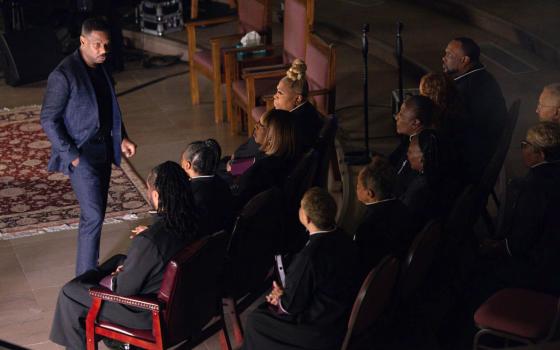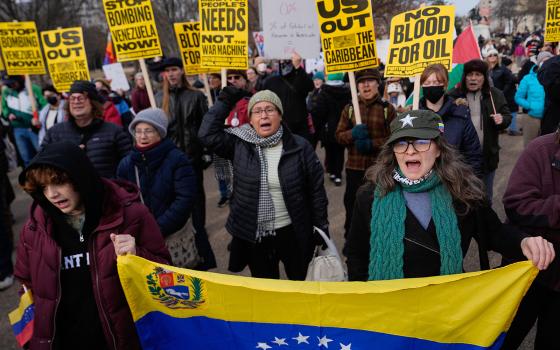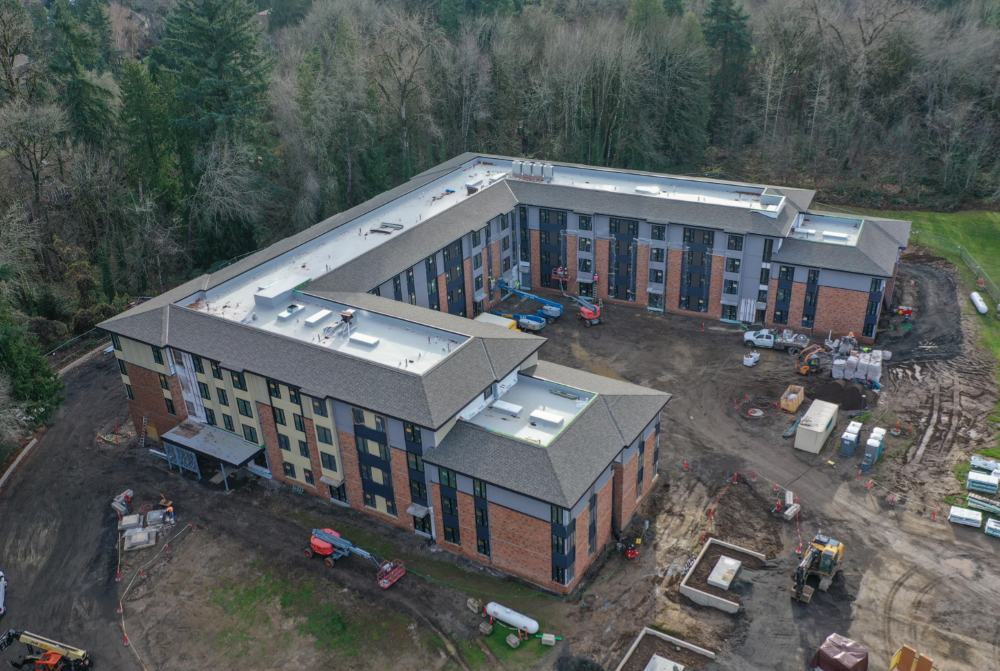
The Mercy Greenbrae project can be seen under construction on the campus of the former Marylhurst University. Through a partnership of the Sisters of the Holy Names of Jesus and Mary and Mercy Housing, 100 units of affordable housing are being built where two college dorms once stood. (Courtesy of Mercy Housing and Walsh Construction)
Editor's note: "Evolving Religious Life," a new series from Global Sisters Report, is exploring how Catholic sisters are adapting to the realities of congregations in transition and new forms of religious life. While we write often about these trends, this particular series will focus more closely on sisters' hopes for the future.
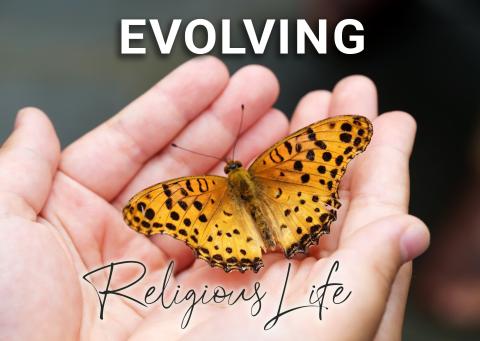
Six years after a heartbreaking closure, the former Marylhurst University campus is getting new life. Founded by the Sisters of the Holy Names of Jesus and Mary in 1893, declining enrollment
forced the closure of the campus in Lake Oswego, Oregon, a tony suburb south of Portland, in 2018. But in April, the first residents will begin moving into 100 units of affordable housing in a sustainable building that replaced two dormitories and a classroom. The land still belongs to the Holy Names sisters, but the apartments are a project of Mercy Housing, one of the nation's largest affordable housing organizations.
Sr. Linda Patrick, a member of the provincial leadership team, said that despite affordable housing being built in an affluent area — usually controversial — there has been enormous support for the Mercy Greenbrae project. The city council in 2020 unanimously approved the zoning change needed.
"It's between two very wealthy communities, Lake Oswego and West Linn. Lake Oswego is probably the most affluent community in Oregon," Patrick said. "But the city recognized the need for affordable workforce housing — people who work in the grocery stores and at Starbucks need a place to live."
Apartments nearby can cost as much as $1,940 a month for a studio apartment; a two-bedroom apartment can cost more than $4,000 a month. A three-bedroom apartment at Mercy Greenbrae, meanwhile, is $1,641 for those with qualifying incomes.
"Affordable housing is a great need," Patrick said.
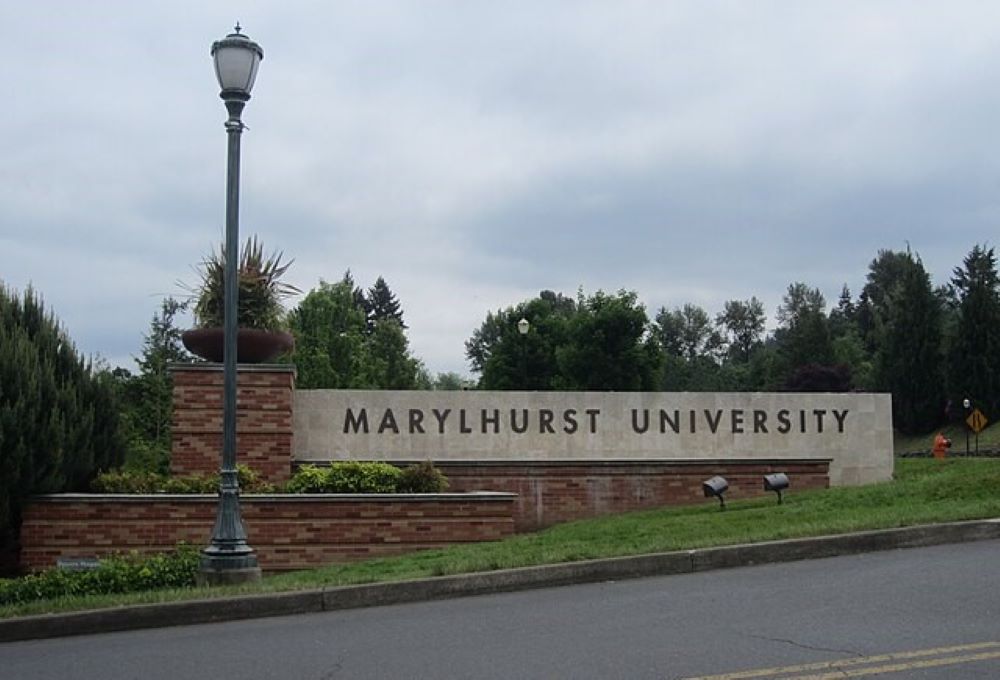
Marylhurst University, founded by the Sisters of the Holy Names of Jesus and Mary in 1893, closed in 2018. In April, residents will begin moving into 100 units of affordable housing built on the site of two former dormitories. (Wikimedia Commons/CC BY-SA 4.0/Another Believer)
The new residents won't be the first non-college students on the campus — in 2000, the sisters moved out of the congregation's provincial house and it became the core of Mary's Woods, a continuous care retirement community, which is now home to 800 residents.
"There was a gentleman at an informational meeting, he's 95, who asked me when (the Mercy Housing representative) was going to talk about 'All the things I can do to help over there,' " Patrick said. "He wants to read to the children."
Turning the provincial house into a senior community and college dorms into affordable housing are just two of the dozens and dozens of projects across the country where Catholic women religious are transitioning assets such as land and buildings into tools to meet other needs.
As the number of sisters declines in the United States — there were 36,321 in 2022, according to the Center for Applied Research in the Apostolate at Georgetown University, down from nearly 80,000 in 2000 — congregations no longer need the massive convents on huge campuses that were built for hundreds of sisters many decades ago.
'None of us, from the foundresses to today, ever looked at property and said, 'How is this going to make us money?' It is always about how is this going to help us advance our ministry?'
—Sr. Susan Sisko
But finding a new use for them is not always easy: Many are badly out of date, with inefficient systems, that are difficult or impossible to retrofit or renovate, and located in quiet, pastoral settings seen by would-be buyers as out-of-the-way and inconvenient.
Sr. Ruth Plante told attendees at the 2022 annual conference of the Resource Center for Religious Institutes that her congregation, the Sisters of St. Basil the Great, worked for years to assess and plan what to do with their 250-acre campus in Uniontown, Pennsylvania, 50 miles southeast of Pittsburgh, eventually sending out 700 requests for proposals.
They got four responses.
"It was disappointing to say the least," Plante told the conference.
At the time, 14 sisters were living in a monastery built in 1965 for 100, and "you can't pay the bills with your grass," she said.
Finally, a buyer came forward and it looked like their problems would be solved. But two days before the scheduled closing, just before Christmas, the buyer backed out.
"So we dig a little deeper into trust," Plante said. "We remember we do have a loving God who has a plan for us."
Today, Sr. Susan Sisko is superior and said the congregation has abandoned plans to sell, but is looking at ways for the campus to be used to further their mission and ministry. It is difficult, however, because developers have such a different perspective.
Sisters see the buildings as beautiful and historic and a spiritual treasure, "but when a developer comes in, all they see is outdated plumbing," Sisko said. "None of us, from the foundresses to today, ever looked at property and said, 'How is this going to make us money?' It is always about how is this going to help us advance our ministry?"
All of this is complicated by the fact that the campus is host to a huge annual pilgrimage to its shrine of Our Lady of Perpetual Help, the oldest and largest Byzantine Catholic pilgrimage in the United States, and many of the buildings are used to house pilgrims during the event.
"For someone to be able to come in and have a vision similar to ours is difficult," Sisko said. "We're still all about ministry, but we also need to eat."
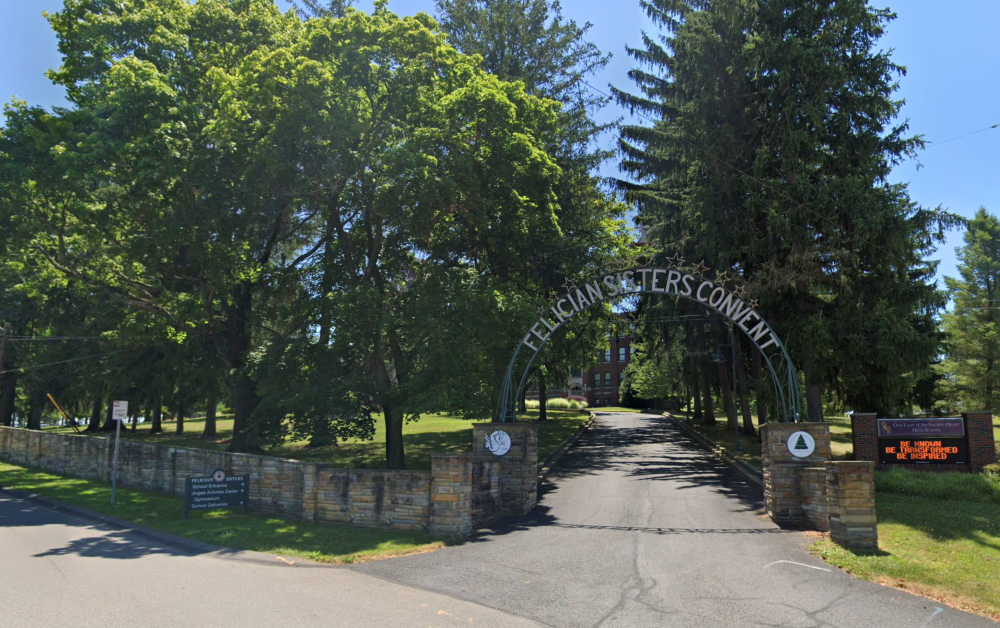
The Felician Convent outside Boston is now home to a shelter for unaccompanied minors who arrive at the U.S. southern border; the children are cared for there while they are connected to family within the United States. (Google Street View)
The Felician Sisters were overjoyed to find not only a similar vision but a way to continue their mission in an unexpected way.
They were examining what to do with unused space in their convent in a suburb of Pittsburgh and realized they could move all their sisters and offices to the third floor, leaving the first two floors open for another use. About the same time, the Holy Family Institute, a sponsored ministry of the Sisters of the Holy Family of Nazareth, was asked by the federal government to expand its Journey to Hope program, which provides temporary shelter for unaccompanied minors arriving at the U.S. southern border.
Since 2021, half the children in the Holy Family Institute's care stay in a building that was once an orphanage on the Holy Family campus, and the other half stay in the Felician convent. The care of unaccompanied minors is strictly regulated by law and court decisions; most children stay 30 to 40 days while they are connected with family in the United States.
Advertisement
"It is a wonderful collaboration between two orders that originally came to this country to serve immigrant children," said Michael Sexauer, president of Holy Family Institute. "For that mission to continue more than 100 years later, though it's unfortunate the need still exists, it's wonderful they're still dedicated to that."
Some people find anything to do with immigration controversial, but Sexauer said this serves two needs at once.
"Really, what are the alternatives?" he said. "I think most people want to see children being cared for rather than for buildings to sit empty."
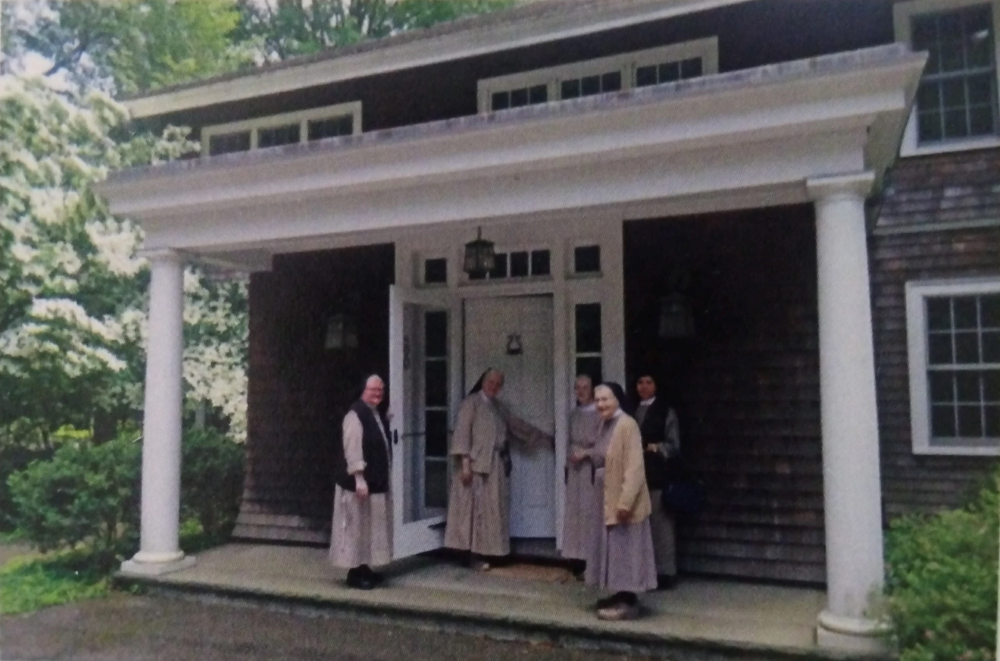
Boston Poor Clare sisters stand in front of their new monastery in Westwood, a Boston suburb. Their previous monastery, which could accommodate 70 sisters, was too big for the congregation. (Courtesy of the Poor Clares of Boston)
Sr. Clare Frances, abbess of the Boston Poor Clares, knows all about nearly empty buildings.
In 1934, the cloistered nuns moved from what Clare Frances called "a five-story flophouse turned into a monastery" in polluted downtown Boston into a beautiful monastery built in the French style in Jamaica Plain on the edge of Harvard University's Arnold Arboretum.
But 70 years later, the monastery built for up to 70 sisters was far, far too big, out of date and too expensive to run and maintain for the nine sisters in the community now. Finding a new home, however, was difficult, and kept getting harder as the value of the existing monastery continued to fall.
"It was an empty building!" Clare Frances said. The heating wasn't zoned, so they couldn't even consolidate in one part of the building to save money — they had to heat all of it or none.
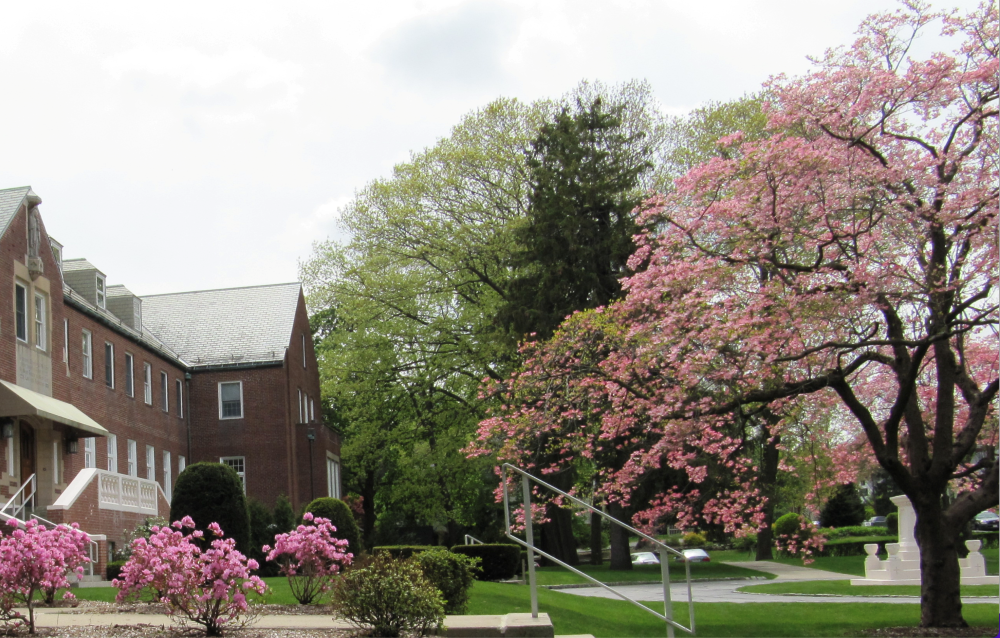
The Boston Poor Clares searched for a new home for 20 years before finding one in Westwood. Pictured is their 90-year-old former convent in Jamaica Plain, near Harvard University's Arnold Arboretum.(Courtesy of the Poor Clares of Boston)
Finally, they found a place in nearby Westwood: Many of the order's benefactors had already moved to the suburbs, the house had been an ecumenical spiritual center and place of prayer, so it came with beautiful, peaceful land complete with a labyrinth, and can be expanded when there are new vocations. The price was essentially a property swap for their old monastery, which will become doctors offices, a daycare center and, behind the monastery building, condominiums.
As the sisters began packing, they realized the old monastery was also filled with mold they hadn't known about, making their move even more urgent. They spent their first night in the new monastery Dec. 15, 2023.
"We're just so grateful we're here," Clare Frances said. "We're delighted with this place."





